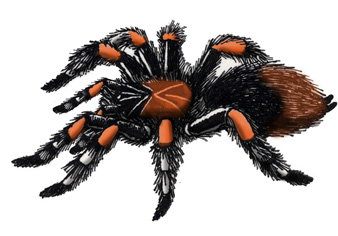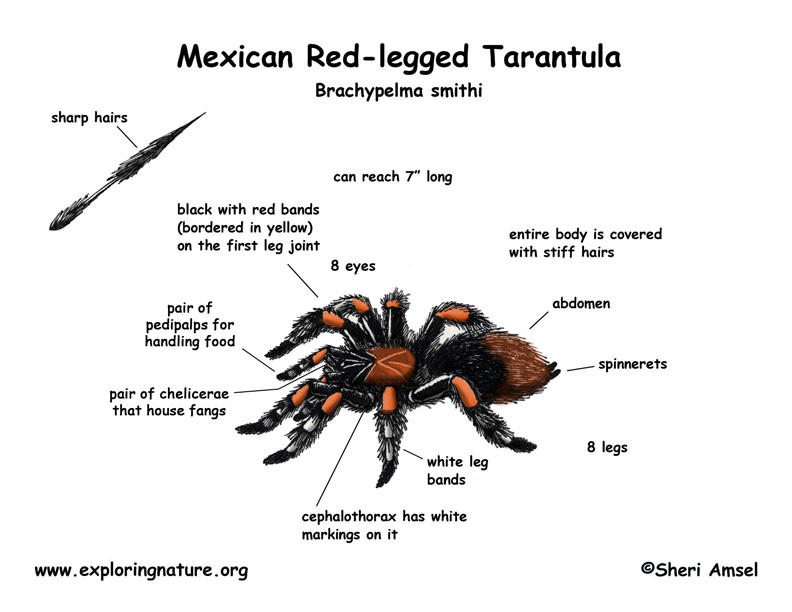

They are found on the Pacific coast of Mexico.
They live in dry (arid) scrubby regions. They burrow into the ground and line their nests with silk.
They are black with red bands (bordered in yellow) on the first leg joint. Lower leg joints have more yellowish-orange. As they age and molt their colors get darker. Their entire body is covered with stiff hairs. They can reach 7” long including their legs.
They are gentle spiders, but when threatened they kick little poisonous hairs off their belly with their back legs. These hairs are very irritating to the skin and if they get into the eyes can cause blindness.
They eat insects, other spiders, small rodents, birds and lizards.
After mating, the female may eat the male. Then in the summer after the rainy season in Mexico ends, she will lay more than 600 eggs in a protective silken cocoon in her burrow. The young hatch out several weeks later. As they grow, they molt their hard exoskeleton every two weeks or so for their first few months. They are independent in about 3 weeks.
Domain: Eukarya
Kingdom: Animalia
Phylum: Arthropoda
Class: Arachnida
Order: Araneae
Family: Theraphosidae/Subfamily: Theraphosinae
Genus: Brachypelma
Species: B. smithi
When you research information you must cite the reference. Citing for websites is different from citing from books, magazines and periodicals. The style of citing shown here is from the MLA Style Citations (Modern Language Association).
When citing a WEBSITE the general format is as follows.
Author Last Name, First Name(s). "Title: Subtitle of Part of Web Page, if appropriate." Title: Subtitle: Section of Page if appropriate. Sponsoring/Publishing Agency, If Given. Additional significant descriptive information. Date of Electronic Publication or other Date, such as Last Updated. Day Month Year of access < URL >.
Amsel, Sheri. "Tarantula (Mexican Red-legged)" Exploring Nature Educational Resource ©2005-2024. December 14, 2024
< http://www.exploringnature.org/db/view/Tarantula-Mexican-Red-legged >

